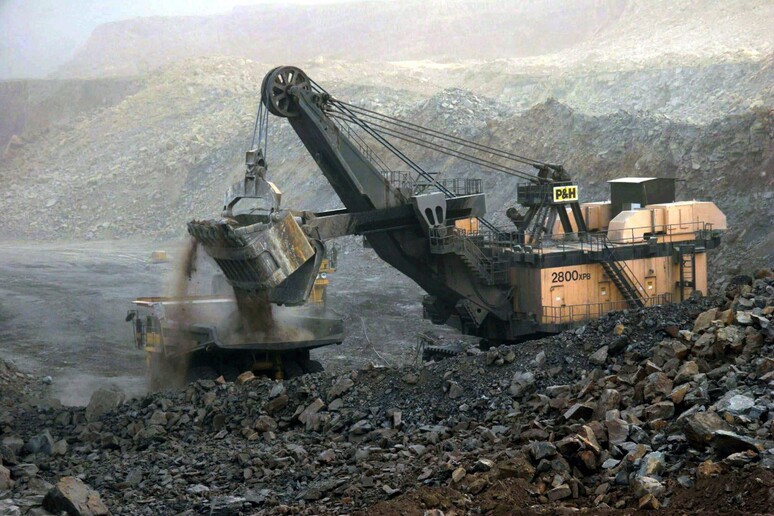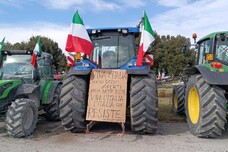Scandium, beryllium, gallium: Raw
materials such as these have been the subject of many headlines
and threats to take over territories by Trump. But why are these
materials that hardly anyone can name so important for the
global economy? And what is the EU doing to secure its supply?
Rare earths and critical raw materials: the European Union needs
these to push forward its strategic economic agendas. However,
the 27-nation bloc is highly dependent on countries such as
China for imports.
First things first: What kind of materials are we talking about?
The European Union has identified 34 critical raw materials
(CRM). Out of those 34 entries, 17 are classified as strategic
raw materials (SRM). This list includes materials such as
cobalt, copper, tungsten, lithium and nickel.
Critical raw materials are of high importance for the EU's
economy. For them, there is a high risk of supply disruption:
Their sources are highly concentrated and there is a lack of
good substitutes. "Some of these elements are more or less
irreplaceable, or at high cost," said John Seaman, a researcher
at the French Institute of International Relations (Ifri).
The SRMs are not to be confused with rare earths. Rare earths
are a group of 17 chemical elements. They are mostly metals and
some of them are not even that rare. The group contains elements
such as cerium, europium, erbium and yttrium. All rare earths
are part of the EU's list of CRMs.
"The more demand grows for these raw materials, the more people
look for them and the more they find. The problem lies more in
the relationship between extraction costs and market prices,"
Seaman said.
Why does the EU need them?
Back in May 2024, the European Critical Raw Materials Act
entered into force. With it, the EU aims to strengthen its
strategic autonomy by increasing and diversifying its supply.
The act sets some benchmarks for domestic capacities along the
strategic raw material supply chain to be reached by 2030: 10
percent of the EU's annual needs for extraction; 40 percent for
processing and 25 percent for recycling. No more than 65 percent
of the EU's annual needs of each strategic raw material at any
relevant stage of processing should come from a single third
country.
Demand is expected to increase sharply in the coming years, as
critical raw materials and rare earths are essential for the
EU's plans to move away from fossil fuels. Essential components
of the EU's green transition, such as batteries or solar panels,
need these raw materials. Likewise, they are part of industrial
supply chains, and are used to make common products such as
mobile phones work. They are also needed to develop strategic
technologies in sectors such as defence.
One example: The Commission expects EU demand for lithium
batteries, which power electric and energy storage vehicles, to
increase 12-fold by 2030 and 21-fold by 2050, compared to
current figures.
The EU's demand for rare earth metals, used in wind turbines and
electric vehicles, is expected to increase five to six times by
2030 and six to seven times by 2050.
The Commission is planning to support a range of almost 50
projects and companies in the member states to reach its goals
for the supply, processing and recycling of CRMs.
The European Commission on Tuesday published a list of 47
"strategic projects" which include opening mines for lithium and
tungsten in its efforts to reduce its over-reliance on China.
Are there supplies within the bloc?
The EU can only rely on its member states for a fraction of its
needs for some CRMs. There are currently no rare earths elements
mined in Europe, although some deposits are known.
Portugal has the largest reserves of lithium - a CRM - in
Europe, the eighth largest in the world, and is the only
significant producer in the EU. The extraction of it has been
contested by local communities in Portugal.
The Spanish Confederation of Mineral Raw Materials Industries
(Primigea) believes that Europe urgently and rapidly needs to
conduct exhaustive geological research in order to regain the
autonomy that it has lost due to its 40 years of dependence on
foreign resources. According to the confederation, Spain is
among the countries with the greatest potential for mining key
raw materials.
It is the EU's second largest producer of copper and manganese.
Under pressure from Brussels, which wants to strengthen its
industrial autonomy, the Spanish government has just presented a
plan to accelerate exploration of its subsoil. "Spain has a very
rich subsoil," particularly in terms of "strategic minerals",
emphasised Ester Boixereu, a geologist at the Geological and
Mining Institute of Spain (IGME).
Though again, extraction is met with resistance by local
populations, concerned about the nuisances and environmental
impact of these projects, particularly related to their high
water consumption and the use of chemicals to recover metals
contained underground.
The revival of the sector will increase "the risk of accidents"
and worsen "the social and environmental impacts inherent in
extractive activity", the environmentalist group Friends of the
Earth recently criticised, denouncing a "lack of transparency"
from the authorities.
(continues)
ALL RIGHTS RESERVED © Copyright ANSA











